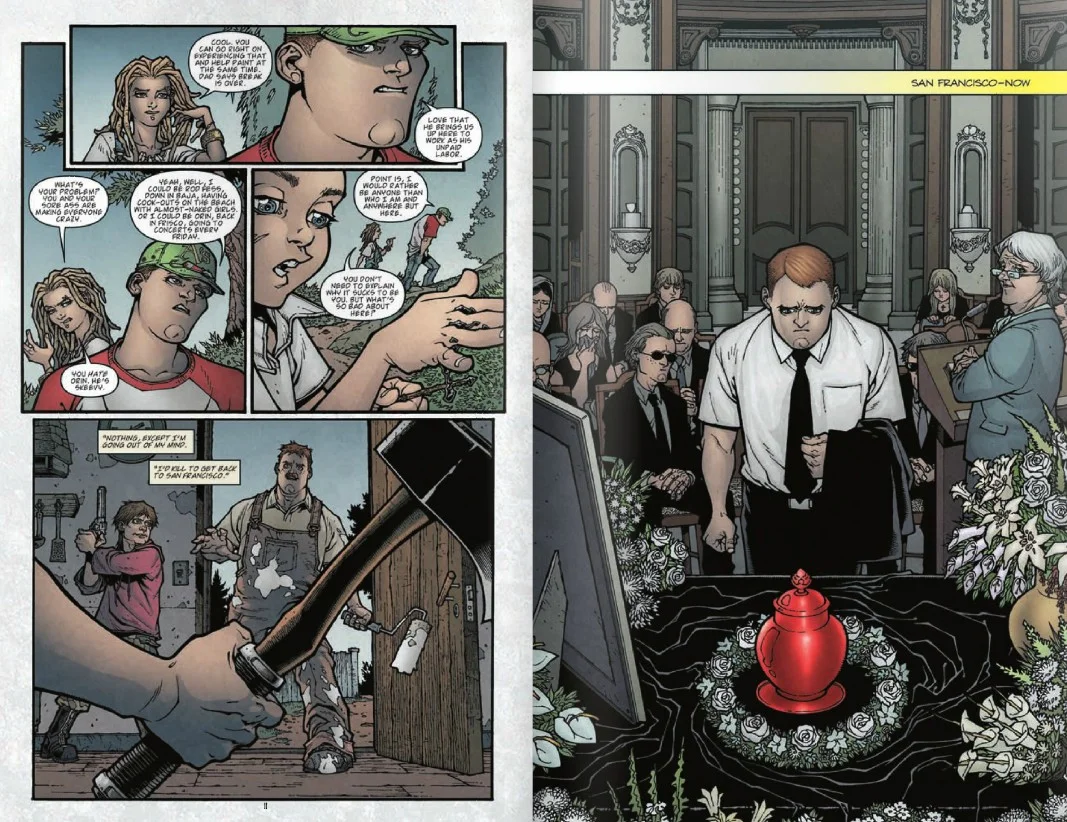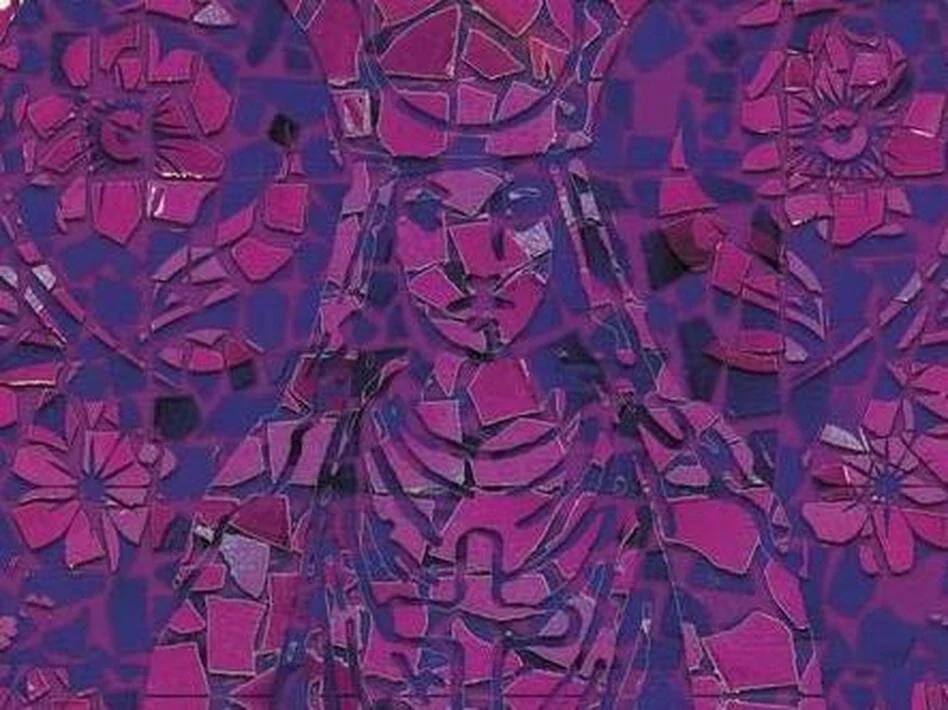The Encyclopedia of Early Earth by Isabel Greenberg
Stories are what make us human. OK, there is not one specific double blind scientific study to totally back this up, although there have been a few on how stories affect the experience of empathy. But really, we are made of stories. Our experience of the present is already 80 milliseconds in the past. That makes every human a storyteller - we construct stories of the present and tell them to ourselves all the time. So, in a sense, The Encyclopedia of Early Earth, a graphic novel by Isabel Greenberg, treats the very thing that made us what we are from the beginning of human time. It is the story of a storyteller and begins with his miraculous birth. Three sisters, living in the Inuit-like land of Nord, find an infant floating in a tiny boat and each one wants him for her own. They visit the Nord medicine man, an old bearded man who lives alone on an iceberg, and explain their dilemma. He splits the baby into three babies and the sisters go off to raise their children. But when the boys hit adolescence they reunite into a single person. With all these experiences tussling around inside him, he becomes a great storyteller. Unfortunately, the medicine man messed up and one little piece of the boy was lost. The boy and his adorable little husky dog climb into a kayak to go in search of his missing piece and begin a classic hero’s quest.
But Greenberg's hero makes his way around the world by telling and collecting stories. Greenberg’s dialogue is full of clever banter and meta comments. All the wise old shamans look very much the same no matter where on earth they live. “Well spotted,” the narrator commends the reader. “This is a plot device that will never be explained, so deal with it!” Her illustrations are archaic woodcuts, with bold lines and simple, effective use of color. While a huge hunk of traditional myths take the hero from East to West, Greenberg sends her storyteller on a journey from the North pole to the South where he meets his love.
He collects stories on the way from a multitude of traditions, north, south, New World and Old, reimagined and woven into Greenberg’s early Earth. The gods, Birdman and his two children, kid and kiddo, are capricious, as gods are wont to be. There are wise old crones, whales who are really gods, and lovers who can never touch. Storytelling begins, ends and binds Greenberg’s book together. It is a universal and uniquely human delight. -- CS Peterson
Locke and Key, by Joe Hill (writer) and Gabriel Rodriguez (art)
Locke & Key ran from 2008-2013. The entire run is now available in trade paperback.
Locke & Key opens with a tragedy and then gets worse. Only it doesn’t get worse right away. Because writer Joe Hill understands that there can be no terror until we care and worry about the people being terrorized. From the very beginning, as a brutal assault on the Locke parents in their summer home changes the lives of the family forever, we intercut with the children loafing in ignorance a short walk away, dealing with issues of identity and not imagining anything could be more important. When they return to the house, they are forced to deal with the intruders head on.
The supernatural journey is launched by an all too real tragedy
The surviving members of the Locke family move across the county to live with their uncle in the family estate, known as Keyhouse, in the Massachusetts Bay. Here, locked doors and supernatural keys entangle the Lockes in the loose ends of the previous generation’s horrifying mistakes. Every new key unlocks more of this old mystery which we come to learn was the source of the opening attack.
Evoking this world and etching emotion onto the characters’ faces is the artwork of Gabriel Rodriguez. In Locke & Key he has crafted some of the best art in comics in the last 10 years. Imagination and details take it part of the way there, but what really makes the art matter to this book are the way Rodriguez draws the expressions of these broken people to build our empathy in every panel.
Locke & Key is a violent and otherworldly journey, but it doesn’t work because it’s a comic full of violence and other worlds. It works because from the very start it’s about people. No matter what kind of comics you read, if any, Locke & Key is worth picking up if you care about stories that care about people. -- Sean Cassity
In Praise of Neil Gaiman’s The Sandman and the Endless
Dream Country, a collection of The Sandman issues 17-20, first issued in 1990, copyright DC Comics.
As a kid, I received a thick Wonder Woman anthology for Christmas and was hooked. I moved on to Spider-Man the misunderstood teen loner, and then to darker fare, like Judge Dredd. But when I went to college they taught me things that blind and choke simple enjoyment, like deconstructionism. How I longed for the days of innocence when texts could have straightforward messages, even if I didn’t know it. Flash forward decades: I discover "graphic novels” like Persepolis and Maus, dealing with political persecution and sexual inequality. Wow! Message + pictures = cool. Hungry for more and in a hurry to make up for lost time, I searched the Internet "best of" lists for best graphic novels of all time.
Morpheus rescues Calliope from the clutches of a writer bereft of ideas who keeps her as his personal muse. The kinder, gentler Morpheus, rebounding from his own captivity, did not approve. "Calliope" written by Neil Gaiman, illustrated by Kelley Jones and Maclom Jones III.Copyright DC Comics 1990.
Blessed is the Internet for it lead me to Dream (aka The Sandman, aka Morpheus) and his endless siblings who are personifications of Destiny, Desire, Despair, Destruction, Delirium … and Death, his down-to-earth goth older sister. When Gaiman took over the series, he opened with Morpheus caught in a trap set for Death. What follows next is a classic hero's quest: Morpheus waits decades until one of his guards dozes off because he can control whoever enters his kingdom of the Dreaming. Freed and avenged, (and embarrassed) Morpheus is off searching for his objects of power that were lost, including his bag of dream sand. Along the way he must, among other things, venture into the underworld and confront Lucifer and his cohort. He learns that victory does not always reset a man (or a billions-of-years old entity) to what he was, nor undo past wrongs, nor restore beliefs shaken on the journey. He needs his big sister Death to help, and for a final rebirth to full glory. On the way he also has to clean up the Dreaming because his minions have let it go to hell in a hand basket while he was ... detained.
Gaiman is credited with inventing “mature dark fantasy” in this brilliantly crafted series which has received more than two dozen Eisner Awards, a Hugo nomination, and A World Fantasy Award, and many more. The books are also “urban fantasy," taking place in our world (the DC version), but Morpheus’ quest and conversion to a hero (if a tragic one) also puts the books squarely into the classic epic fantasy category. You'll find references to classical mythology, Shakespeare, and the Bible in The Sandman. Read 'em because, best of all, the story hasn't been ruined by Hollywood yet, though adaptations have been threatened since the 1990s. -- Lisa Mahoney















Cadwell Turnbull's new novel — the first in a trilogy — imagines the hard, uncertain work of a fantastical justice.